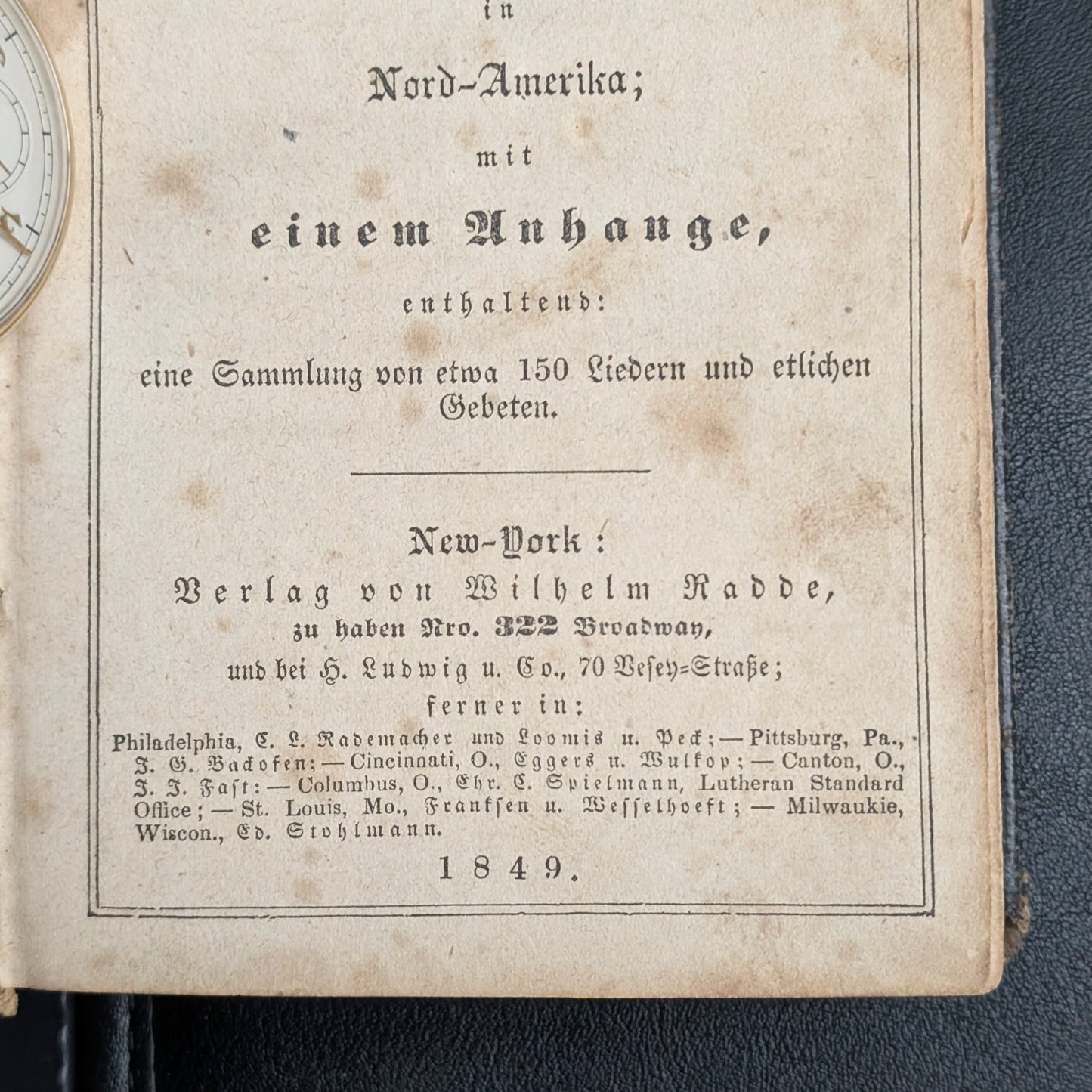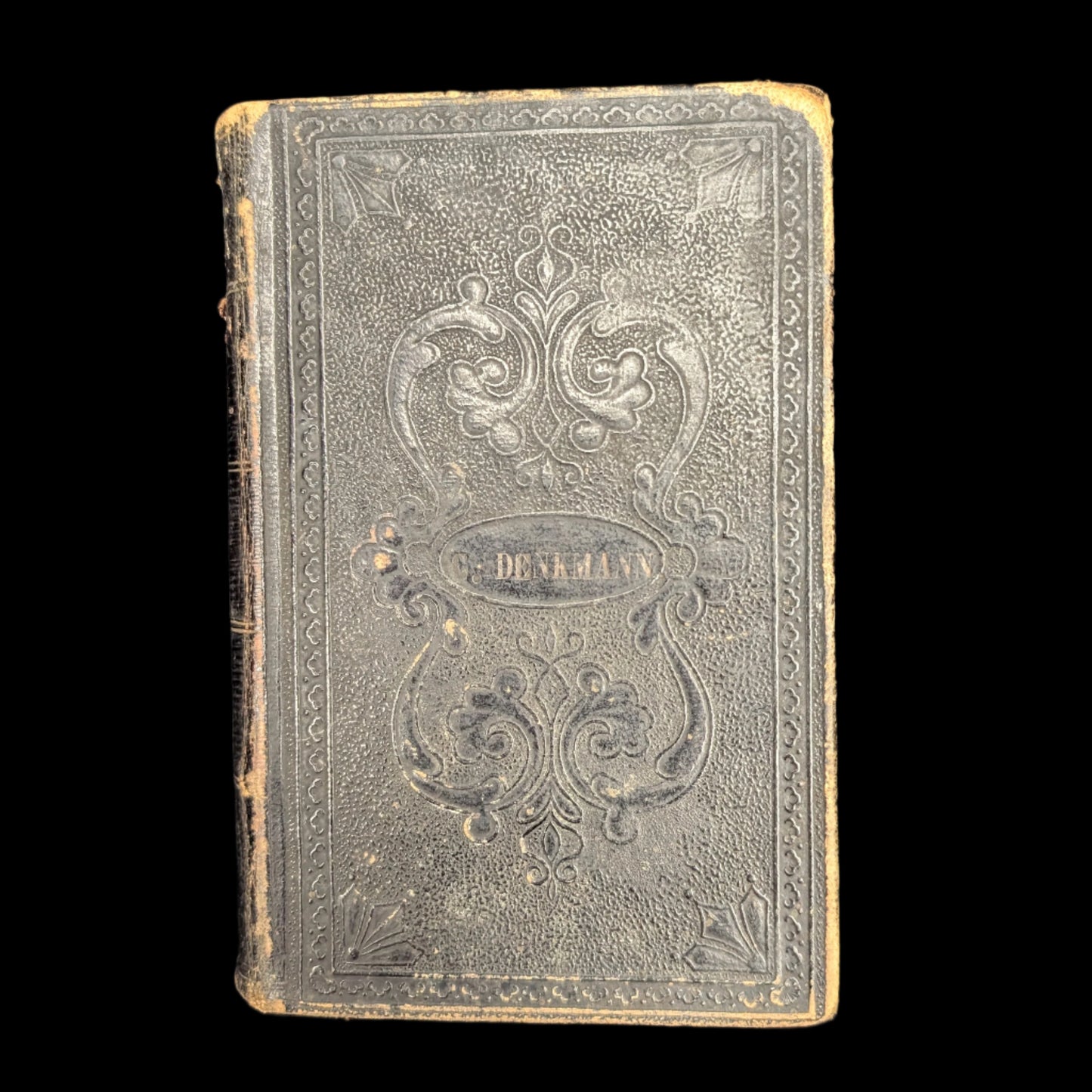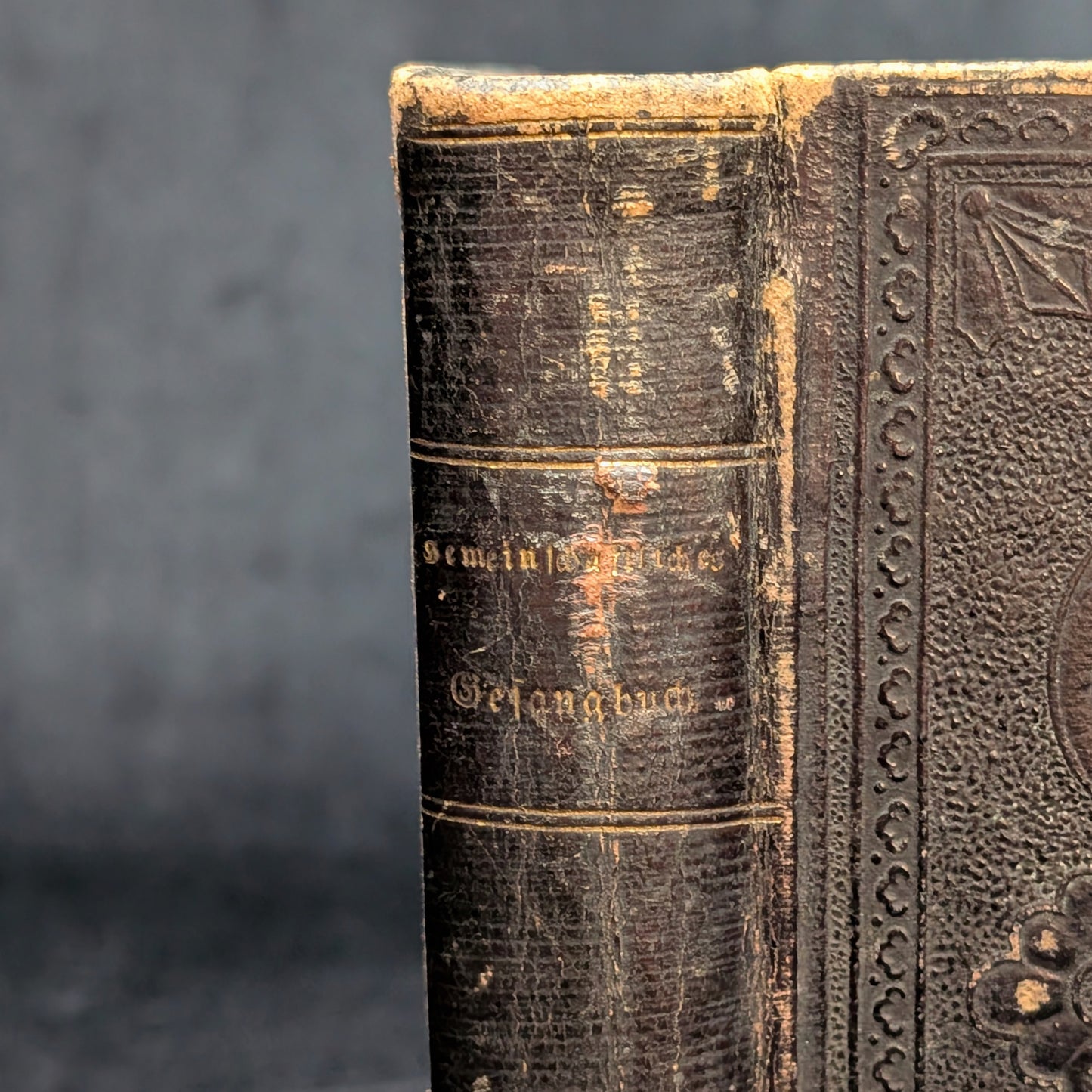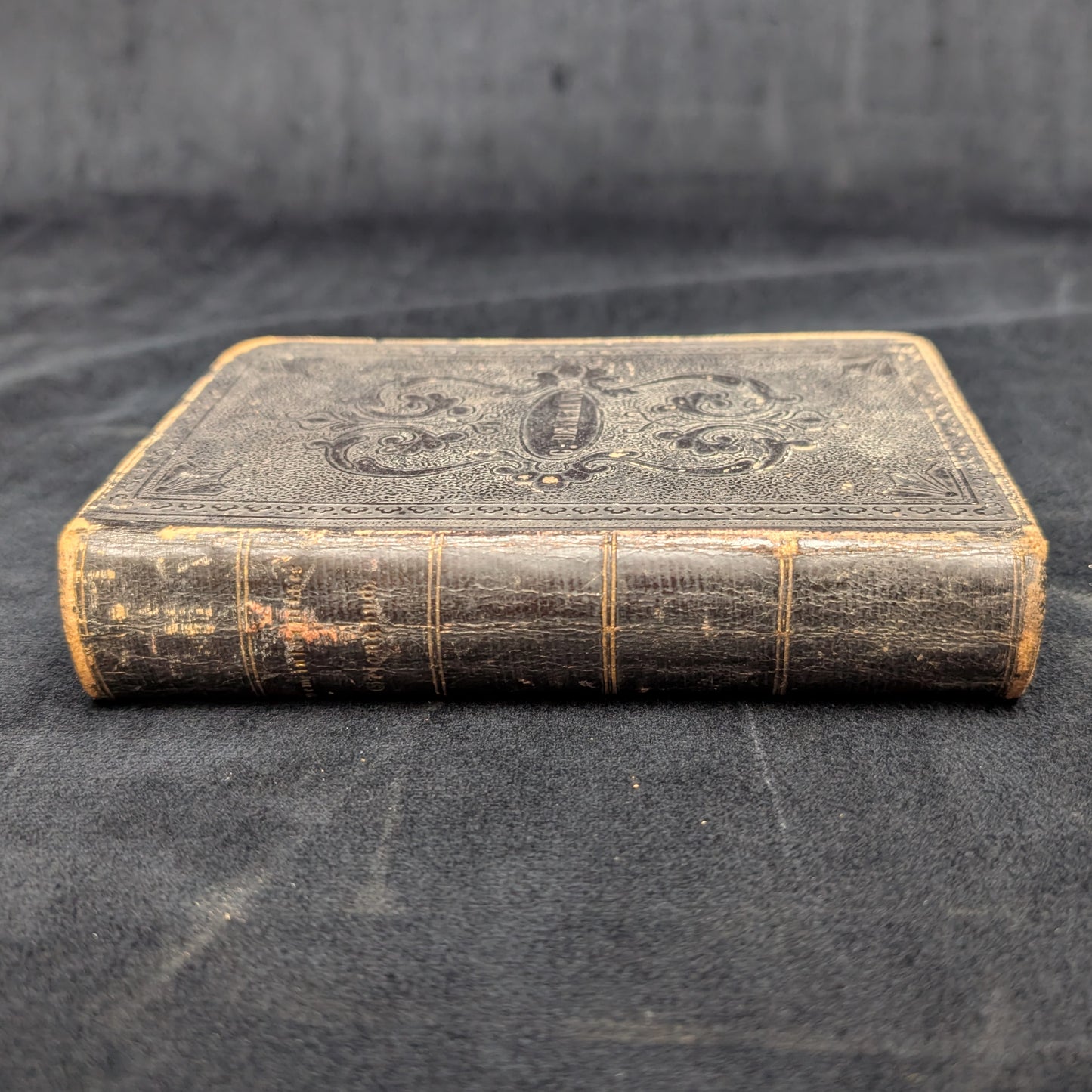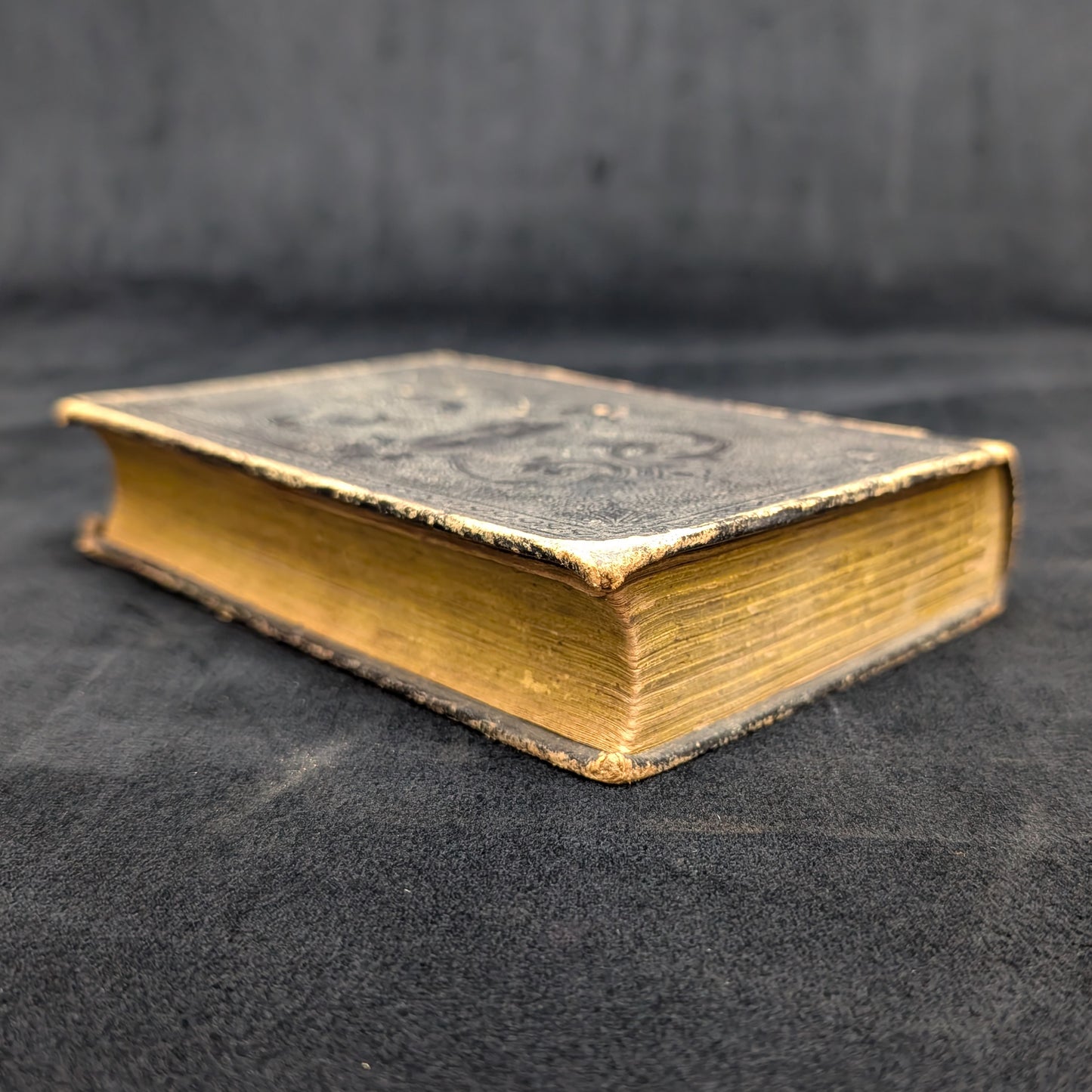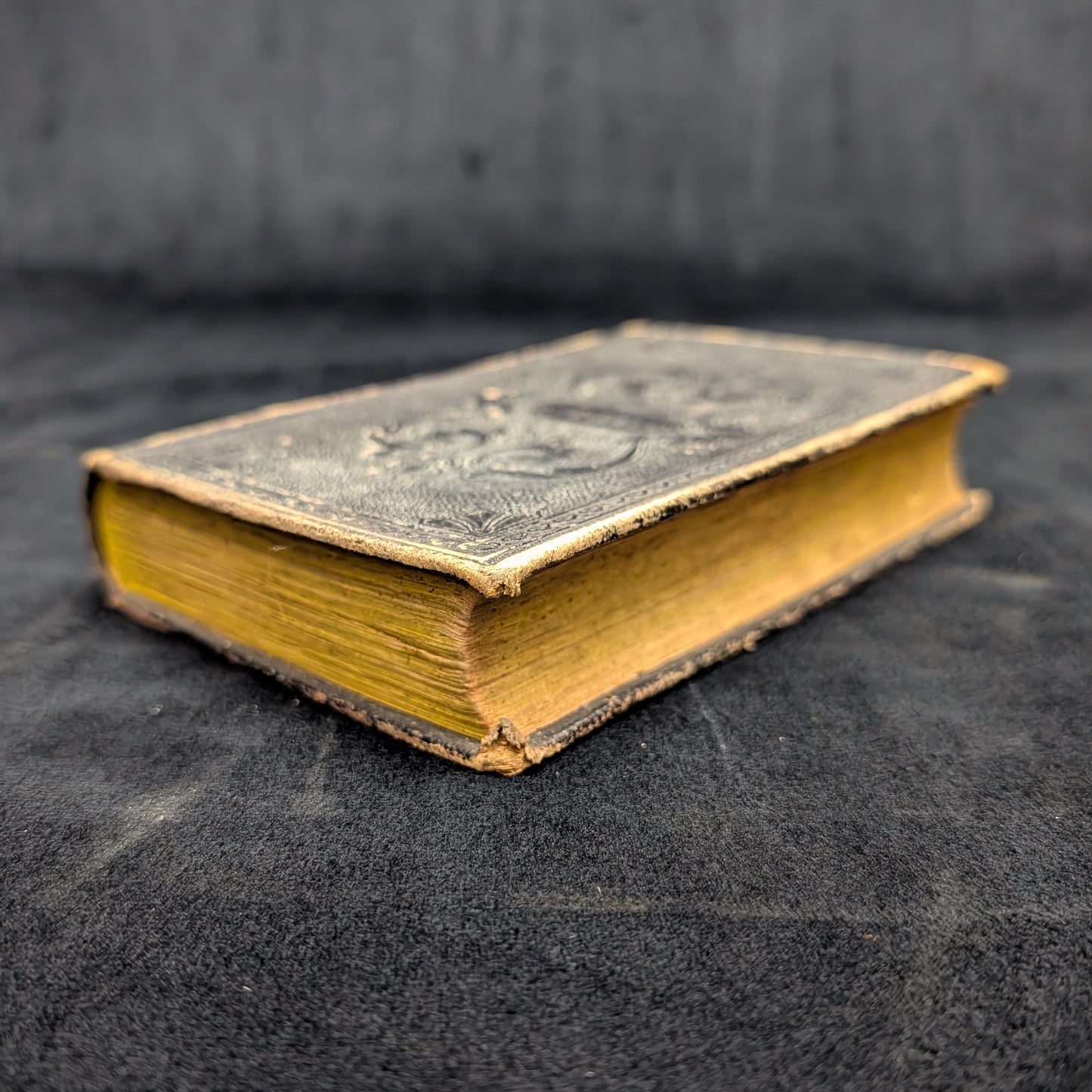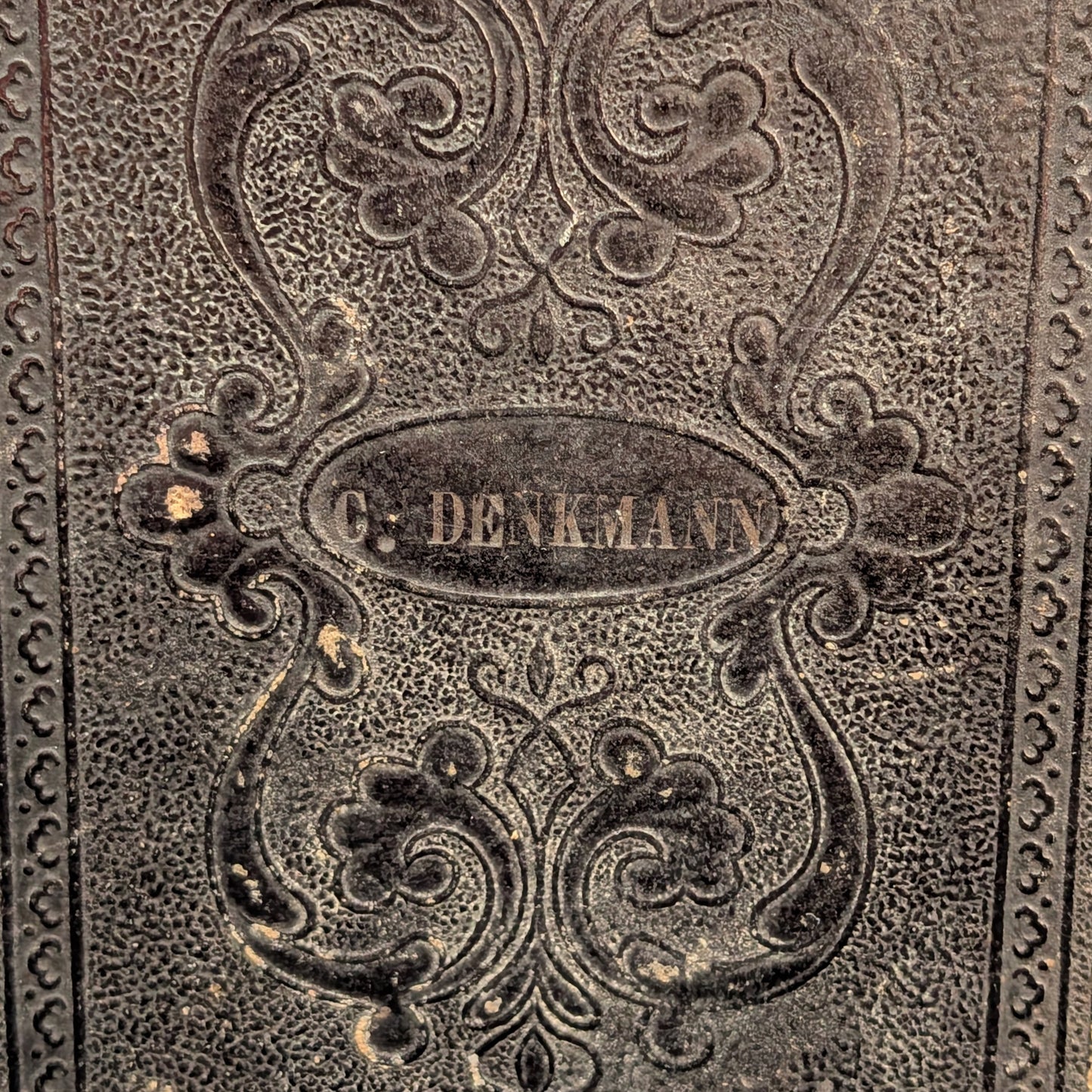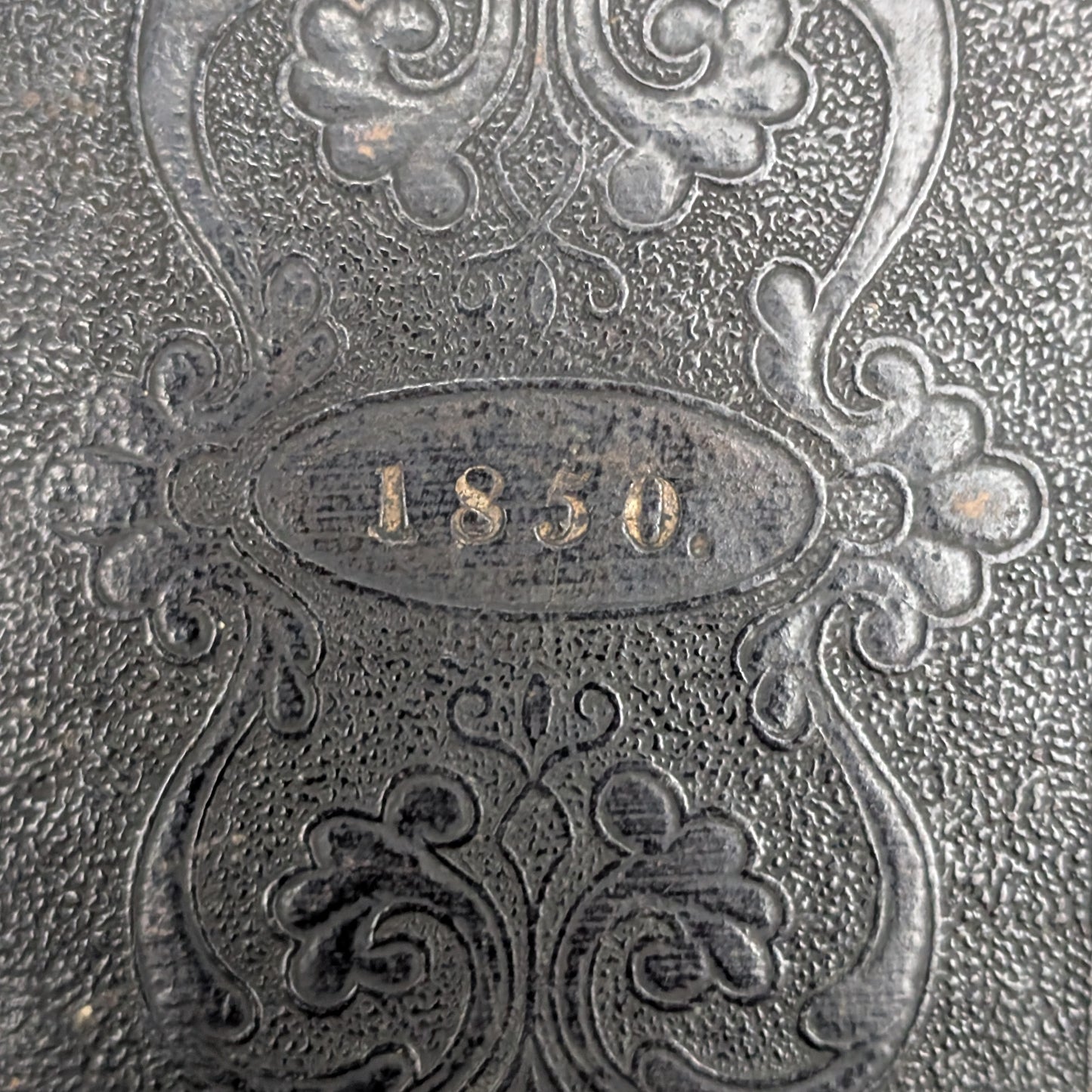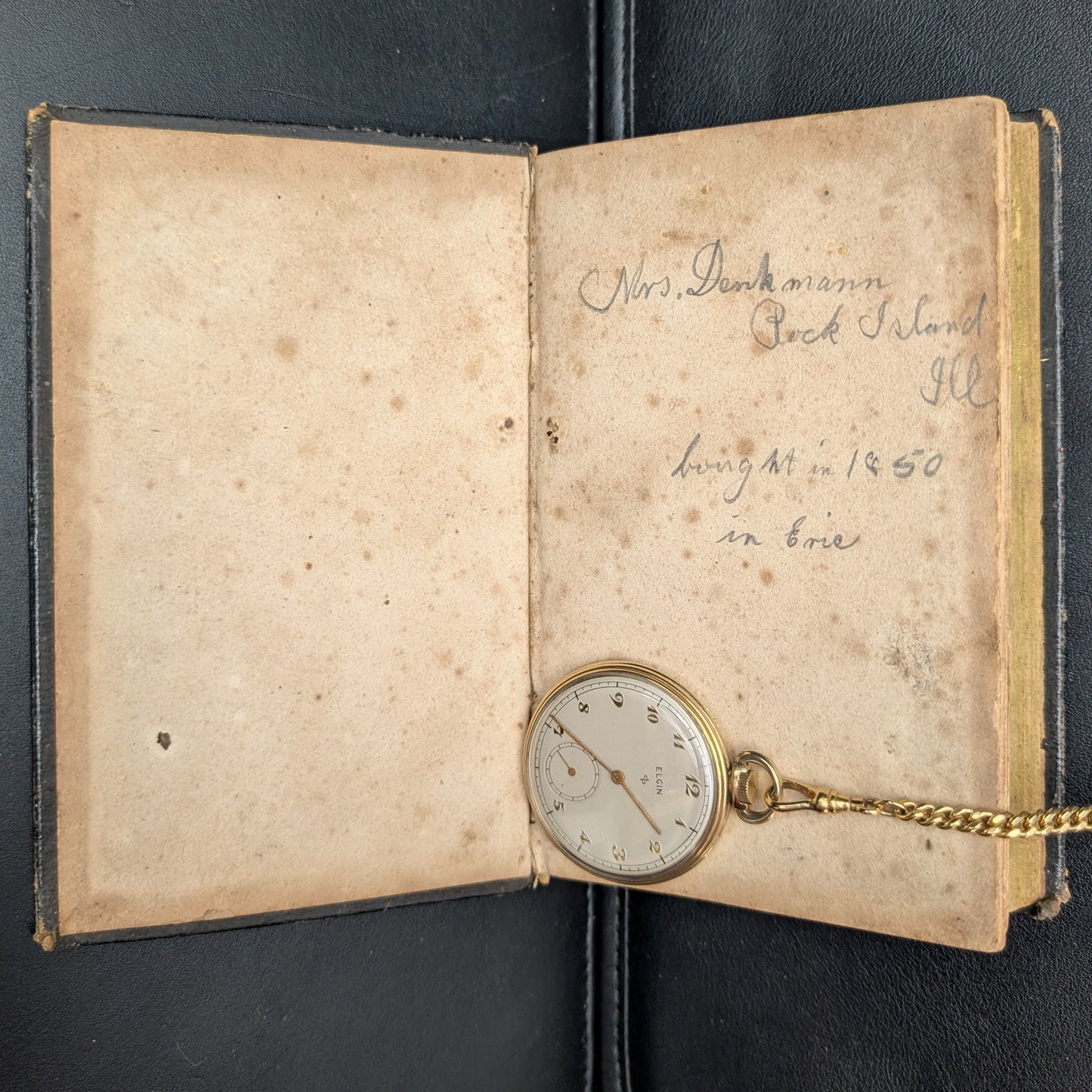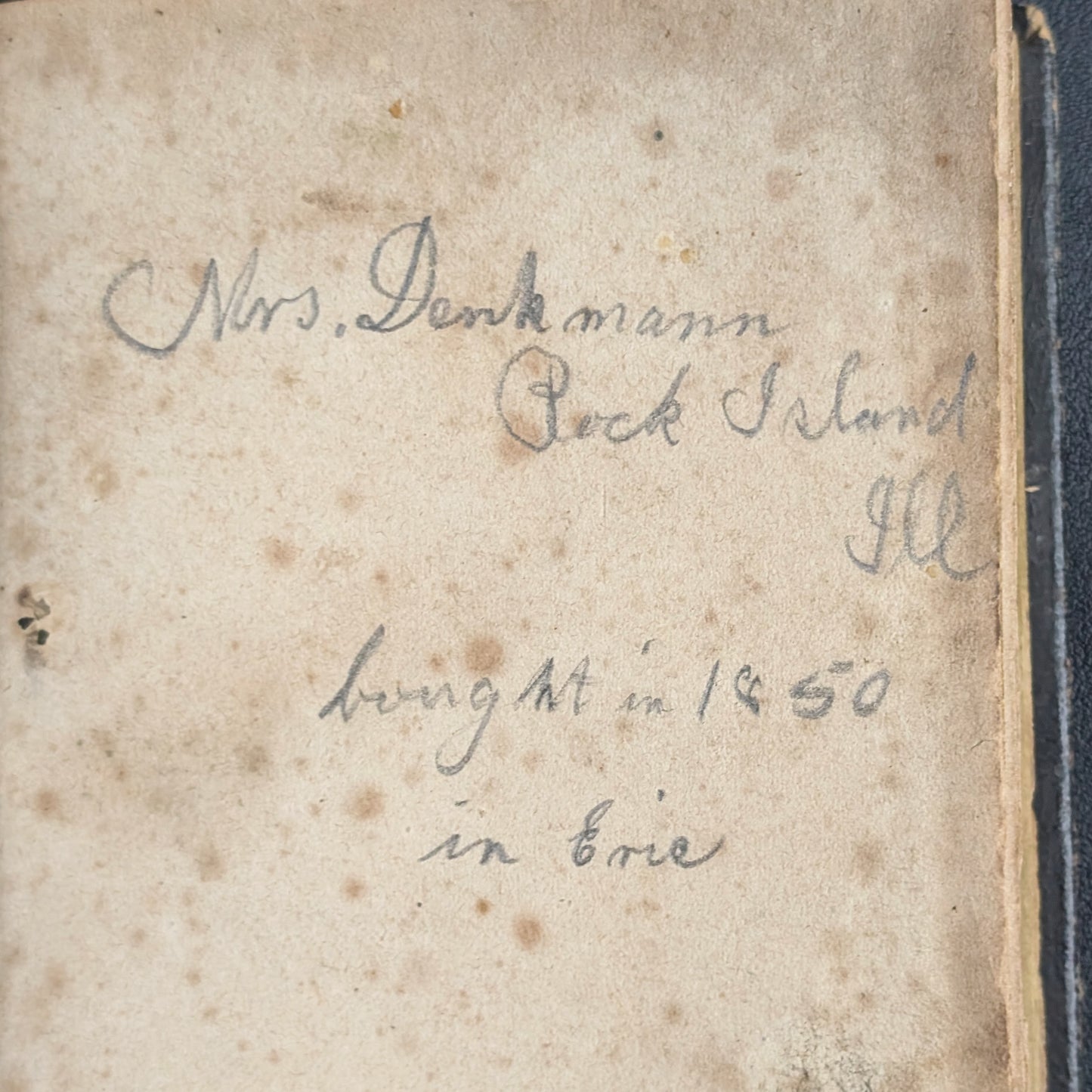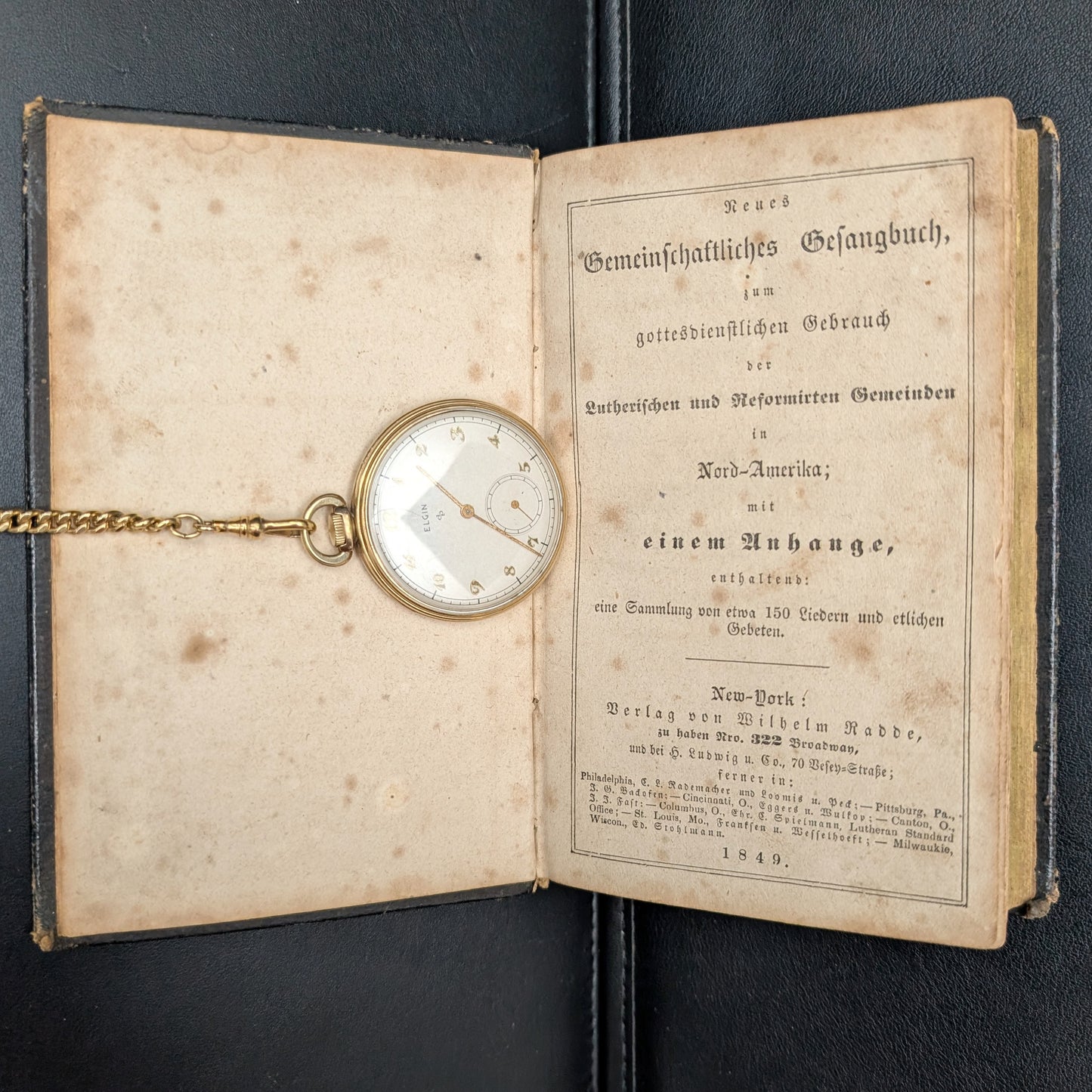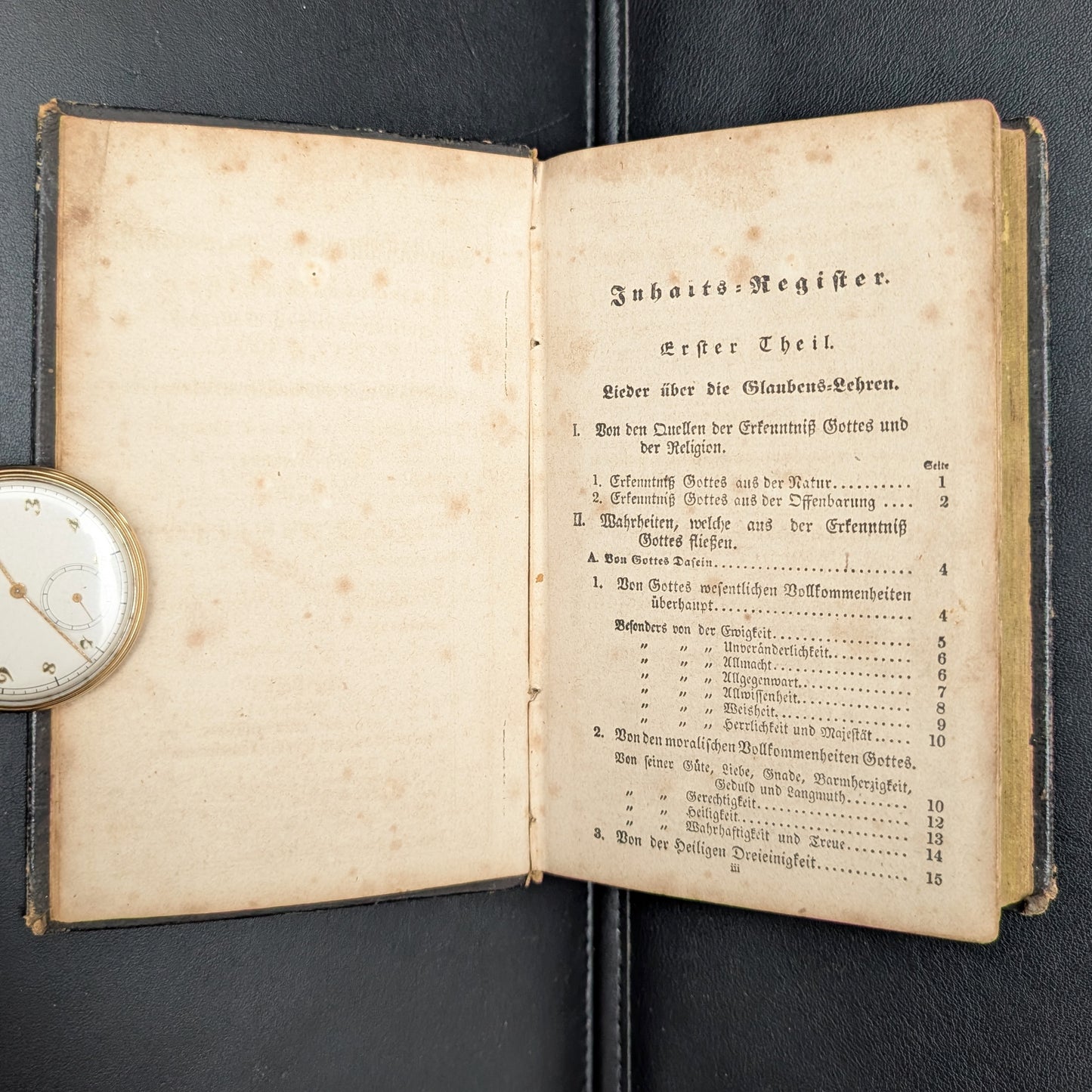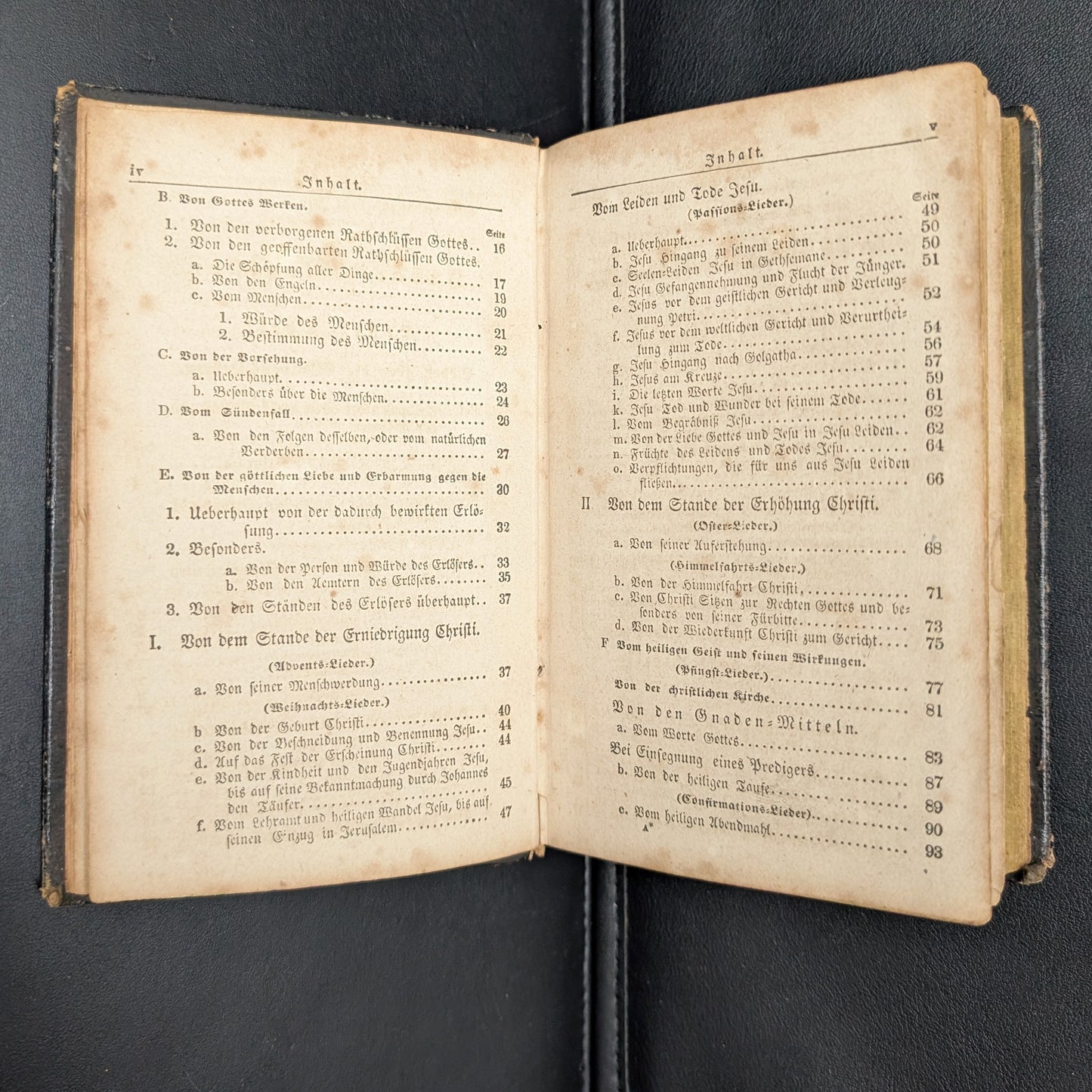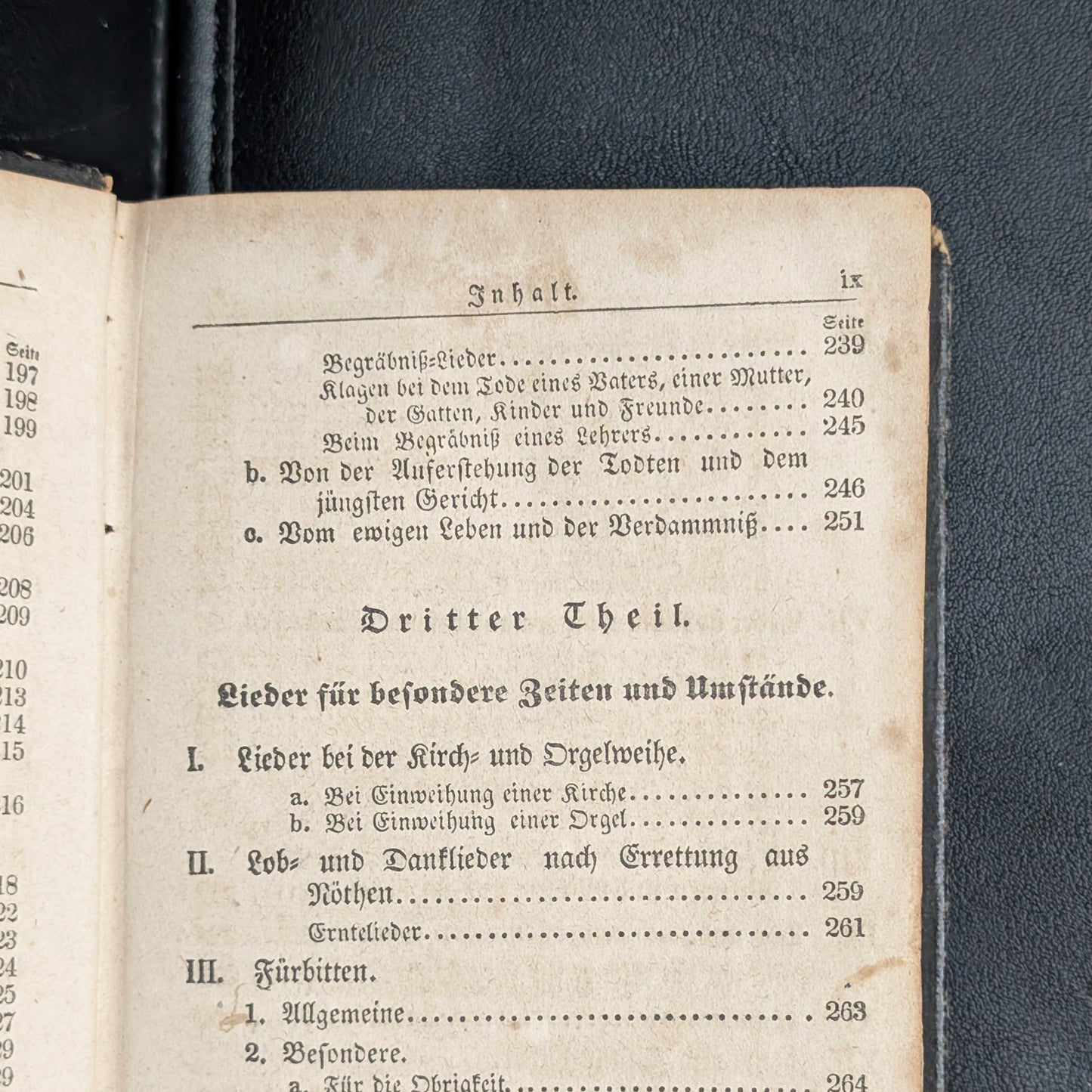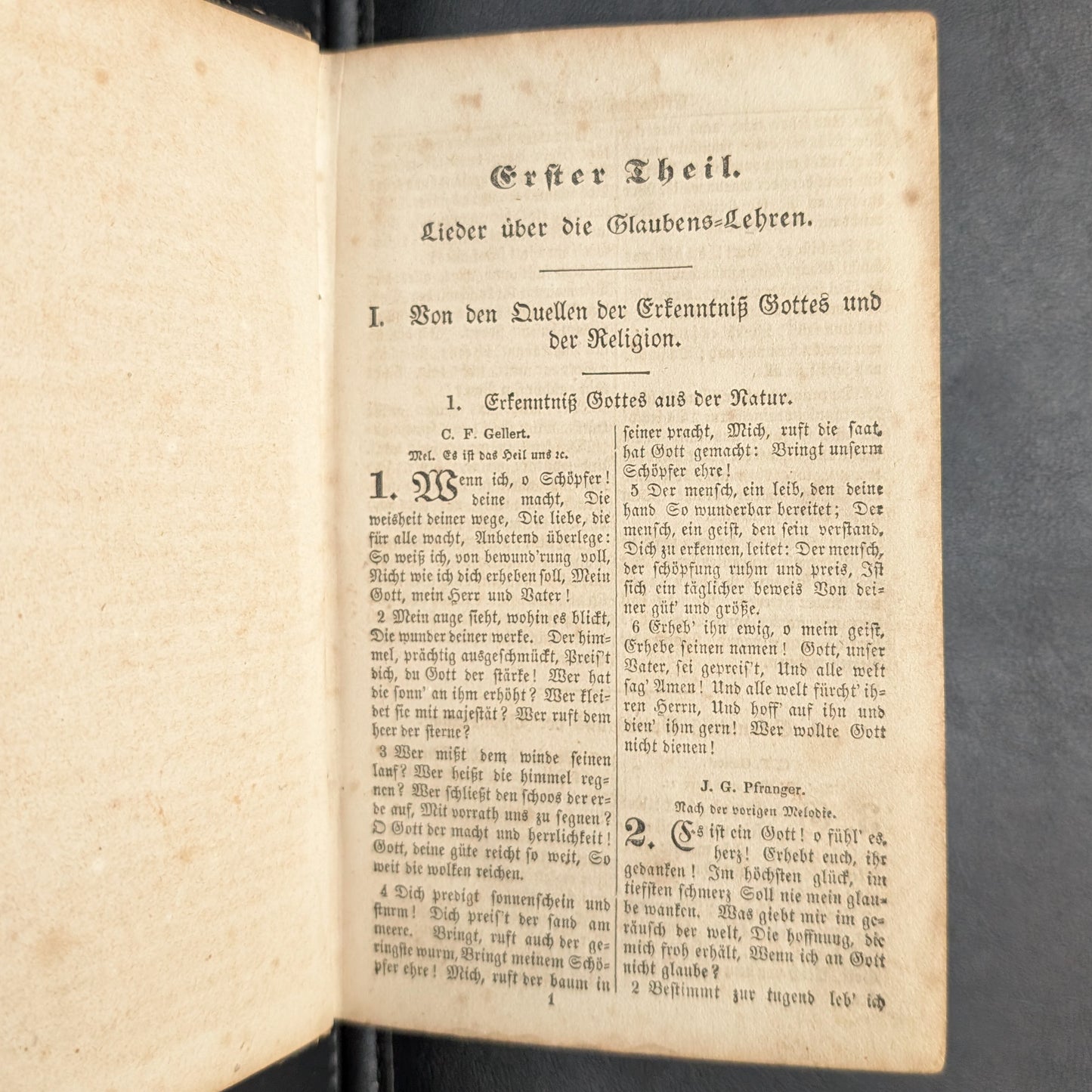
German Lutheran Hymnal, Neues Gemeinschaftliches Gesangbuch, 1849
German Lutheran Hymnal, Neues Gemeinschaftliches Gesangbuch, 1849
Couldn't load pickup availability
German-Language Hymnal 1849
Neues Gemeinschaftliches Gesangbuch, Zum Gottesdienftliden Gebraut der
Lutherischen and Reformierten Gemeinden in Nord-Amerika; mit einem Unhange, enthaltend: eine Sammlung von etwa 150 Liedern und etlichen Gebeten
New York: Berlag Von Wilhelm Radde, 1849
Common Hymn Book For Divine Worship Use Of The Lutheran And Reformed Churches in North America With An Appendix
A Collection of about 150 Hymns and Some Prayers
Published by Wilhelm Radde
Available at No. 322 Broadway and at G. Ludwig & Co. 60 & 70 Vesey Street; furthermore in: [cities listed] 1849
NOTE: Prior owner inscription: “Mrs. Denkmann Peck Island HL bought in 1850 in Erie”
This 1849 German-language hymnal, "Neues Gemeinschaftliches Gesangbuch," was created for use in Lutheran and Reformed churches in North America. It's a "Common Hymn Book" intended for "Divine Worship," and includes an appendix with "a collection of about 150 hymns and some prayers." Published by Wilhelm Radde in New York, this hymnal aimed to serve the German-speaking communities of these denominations, providing them with a resource for congregational singing and worship. It reflects the importance of language and tradition in maintaining cultural and religious identity among immigrant communities in 19th-century America.
Wilhelm Radde was a publisher based in New York City who specialized in German-language publications, catering to the needs of the growing German immigrant population in North America. His achievement lies in providing essential resources, like this hymnal, that supported the religious and cultural life of these communities. Radde's publishing house played a crucial role in disseminating German literature, religious texts, and other materials, helping to preserve language and heritage within the immigrant experience. While he might not be a widely known literary figure, his contribution to the cultural fabric of 19th-century America was significant, facilitating the integration and cultural maintenance of a substantial segment of the population.
Please review each photo carefully for wear and usage. This item came from a local estate sale and was in the previous owner's home office for many years. Send me a message if you have questions or would like additional photos.

